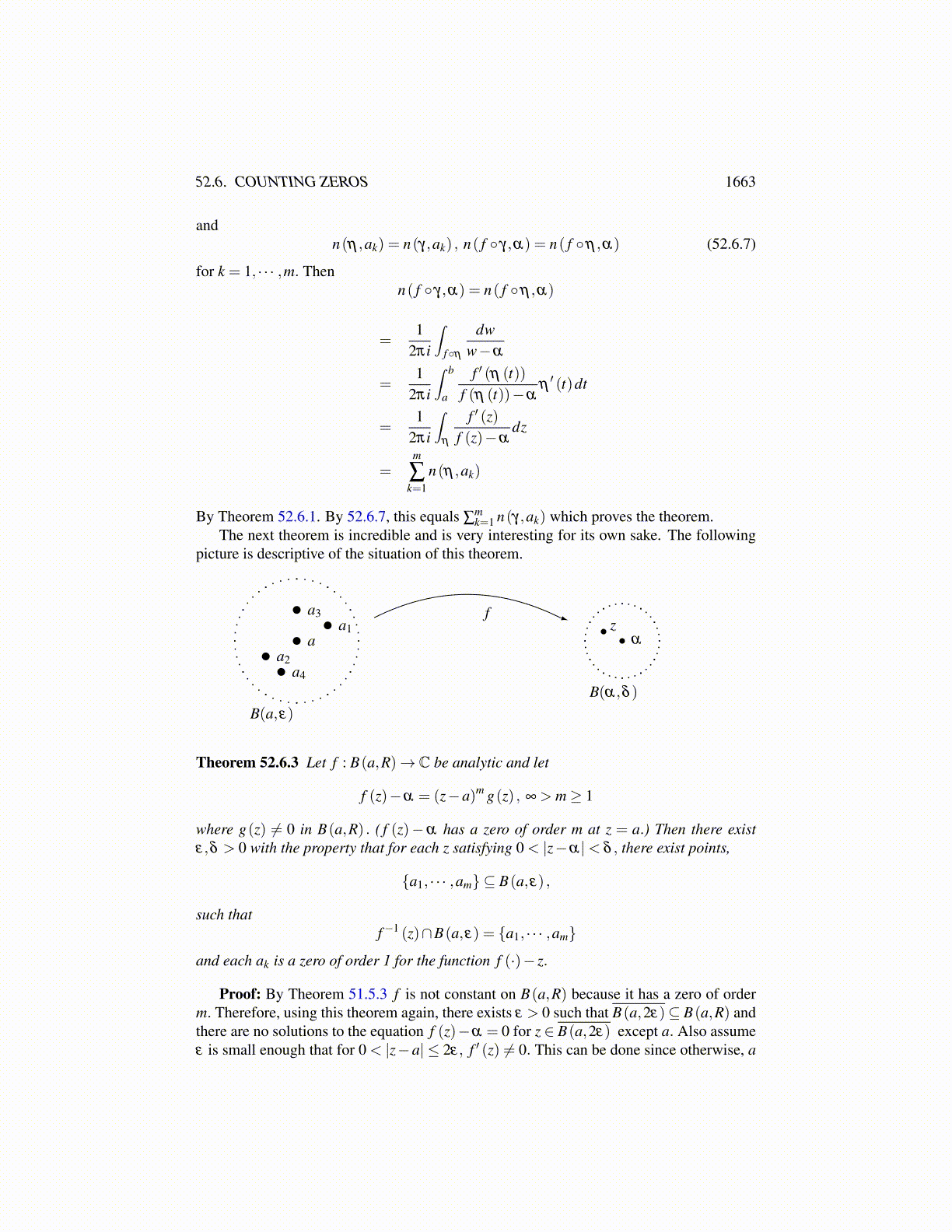
52.6. COUNTING ZEROS 1663
∂Ω. Show that then { fn} converges uniformly on Ω and that the function to whichthe sequence converges is analytic on Ω and continuous on Ω.
9. Suppose Ω is a bounded region and there exists a point z0 ∈ Ω such that | f (z0)| =min
{| f (z)| : z ∈Ω
}. Can you conclude f must equal a constant?
10. Suppose f is continuous on B(a,r) and analytic on B(a,r) and that f is not constant.Suppose also | f (z)| = C ̸= 0 for all |z−a| = r. Show that there exists α ∈ B(a,r)such that f (α) = 0. Hint: If not, consider f/C and C/ f . Both would be analytic onB(a,r) and are equal to 1 on the boundary.
11. Suppose f is analytic on B(0,1) but for every a∈ ∂B(0,1) , limz→a | f (z)|=∞. Showthere exists a sequence, {zn} ⊆ B(0,1) such that limn→∞ |zn|= 1 and f (zn) = 0.
52.6 Counting ZerosThe above proof of the open mapping theorem relies on the very important inverse functiontheorem from real analysis. There are other approaches to this important theorem which donot rely on the big theorems from real analysis and are more oriented toward the use of theCauchy integral formula and specialized techniques from complex analysis. One of theseapproaches is given next which involves the notion of “counting zeros”. The next theoremis the one about counting zeros. It will also be used later in the proof of the Riemannmapping theorem.
Theorem 52.6.1 Let Ω be an open set in C and let γ : [a,b]→ Ω be closed, continuous,bounded variation, and n(γ,z) = 0 for all z /∈ Ω. Suppose also that f is analytic on Ω
having zeros a1, · · · ,am where the zeros are repeated according to multiplicity, and supposethat none of these zeros are on γ∗. Then
12πi
∫γ
f ′ (z)f (z)
dz =m
∑k=1
n(γ,ak) .
Proof: Let f (z) = ∏mj=1 (z−a j)g(z) where g(z) ̸= 0 on Ω. Note that some of the a j
could be repeated. Hencef ′ (z)f (z)
=m
∑j=1
1z−a j
+g′ (z)g(z)
and so1
2πi
∫γ
f ′ (z)f (z)
dz =m
∑j=1
n(γ,a j)+1
2πi
∫γ
g′ (z)g(z)
dz.
But the function, z→ g′(z)g(z) is analytic and so by Corollary 51.7.20, the last integral in the
above expression equals 0. Therefore, this proves the theorem.The following picture is descriptive of the situation described in the next theorem.